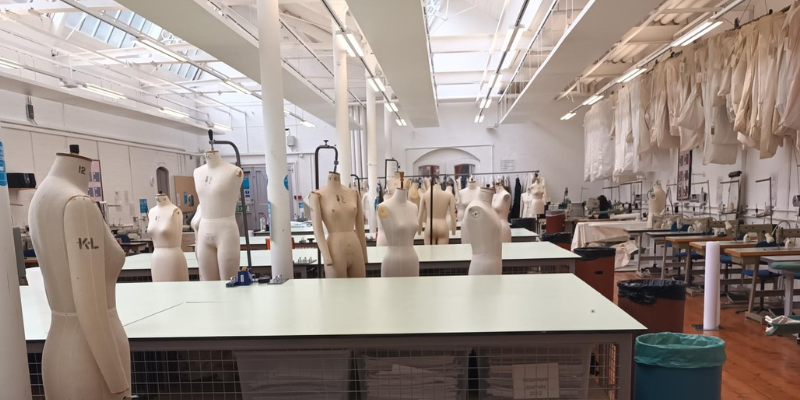Facilities
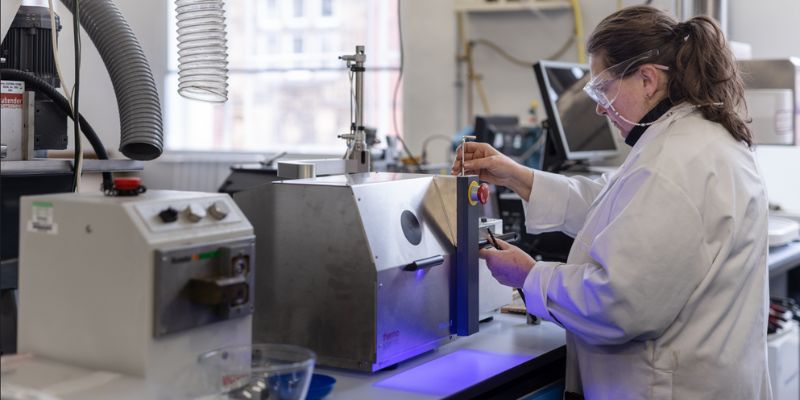
The Leeds Institute of Textiles and Colour (LITAC) activities are supported by one of the most extensively equipped research facilities in the world.
We maintain an extensive range of research facilities and equipment for textile technology, colour science, textile and fashion design, as well as digital technology.
Examples of our facilities are summarised below. A full list of available facilities in the School of Design is available via our equipment page.
On-demand manufacturing facilities
Nationally and internationally, the industry is under significant economic, environmental and regulatory pressure to shift from traditional, linear models of design and production to circular models that improve resource efficiency and reduce waste and environmental impacts.
Customised 3D digital design via on-demand manufacturing of garments and high-performance textiles are key creative capabilities, that could reduce over-production and increase opportunities for product customisation. Effective methods of polymer recycling for end-of-life garments, to maximise resource efficiency and enable production of new feedstocks is also important from a full life cycle environmental impact perspective.
Following the award of an AHRC creative research capability (CResCa) grant, small-scale manufacturing facilities have been installed by LITAC at the School of Design and are being harnessed in association with existing lab-scale equipment, to creatively evaluate new modes of design and manufacturing consistent with long-term sustainable development.
Data-driven machine learning (artificial intelligence) and 3D body scanning information can be harnessed to inform ‘design-right first time’ approaches, as well as improved personalisation and customisation of designs.
Aided by spectroscopy to assess waste polymer compositions, extruded melt-spun filaments, including bicomponents, containing fibre-to-fibre recycled polymer content (recovered from end of life (EoL) waste clothing and other textile sources are then manufactured ready for the next stage of production.
As with existing fully fashioned weft knitwear, a new approach for merging fabric and garment production is then harnessed using a creel-fed, digital 3D jacquard weaving system enabling production of customised woven products ‘on-loom’, with minimal subsequent CMT requirements. At the EoL, non-rewearable end-of-life garment waste is then brought back through collection and sorting for recycling using appropriate platforms.
Textile facilities
Chemistry lab
In addition to the formulation of polymer solutions, chemical finishes and dyes, a range of chemical characterisation techniques and application technologies is available to enable fibre composition and properties to be modified and measured.
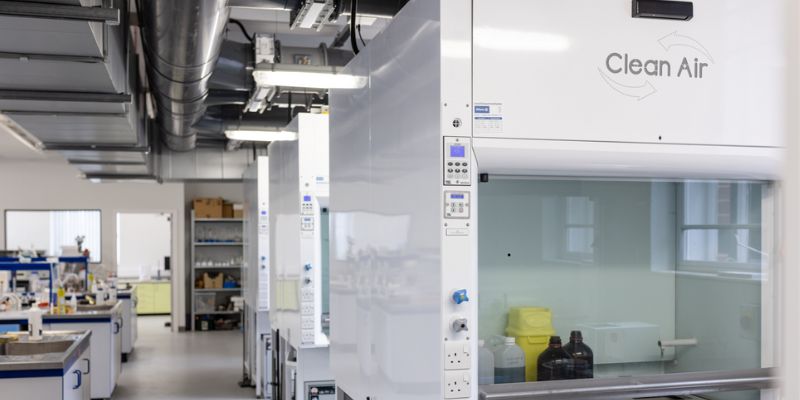
Materials testing lab
Two comprehensively equipped laboratories are available to measure the multitude of parameters that govern the quality and fitness for purpose of textile materials. Facilities also include specially developed instruments developed from our research.
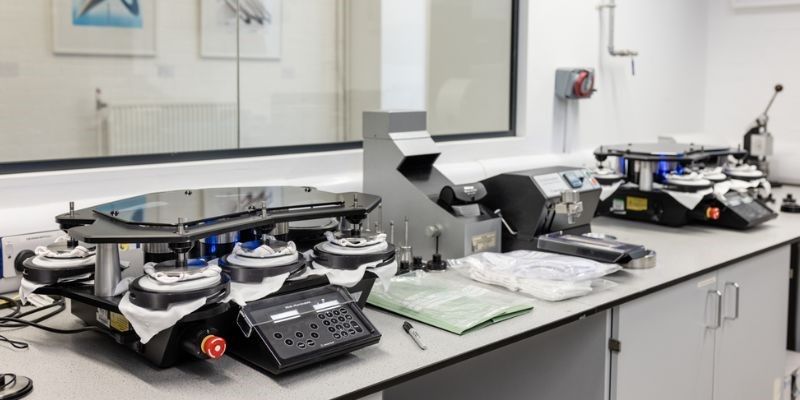
Yarn Spinning, Knitting and 3D Weaving Innovation Centre
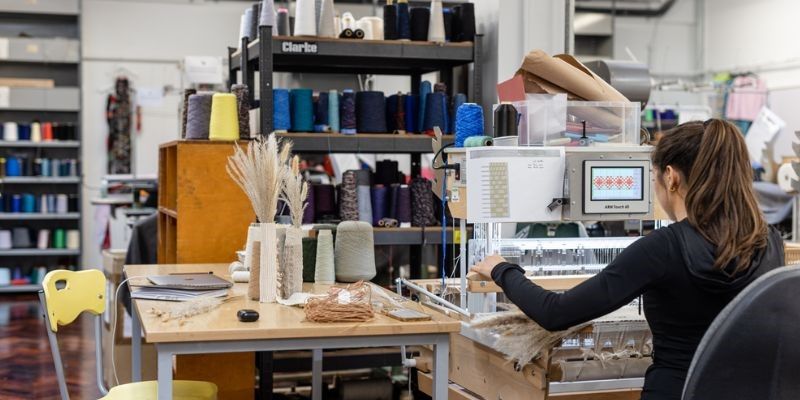
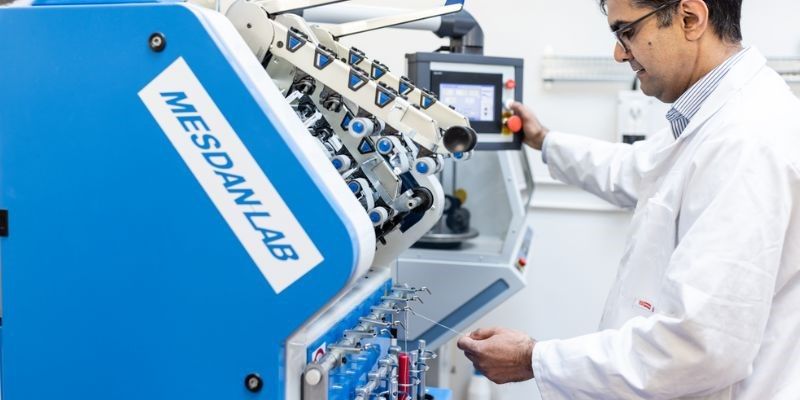
Lab-scale fibre-to-yarn spinning equipment is available in addition to extensive fibre extrusion capabilities in the adjacent laboratory. In addition to full garment weft knitting capabilities, the 3D Weaving Innovation Centre houses a state-of-the-art loom suitable for producing complex 3D fabrics for apparel and technical textiles.
Nanofibre and sub-micron fibre manufacturing
Facilities for producing webs containing nano- and sub-micron fibres are available, in addition to a comprehensively equipped nonwoven research laboratory.
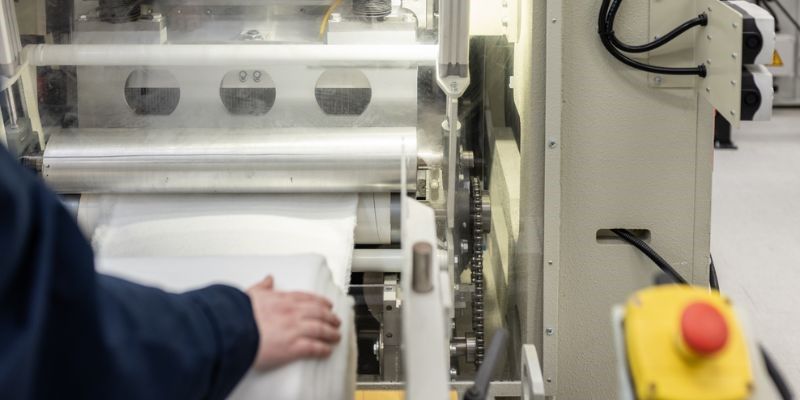
Wet and dry processing lab
This facility enables dyeing and finishing of fabrics using a broad range of techniques. These processes are vital to the production, performance and aesthetics of textile materials, and can add significant value.
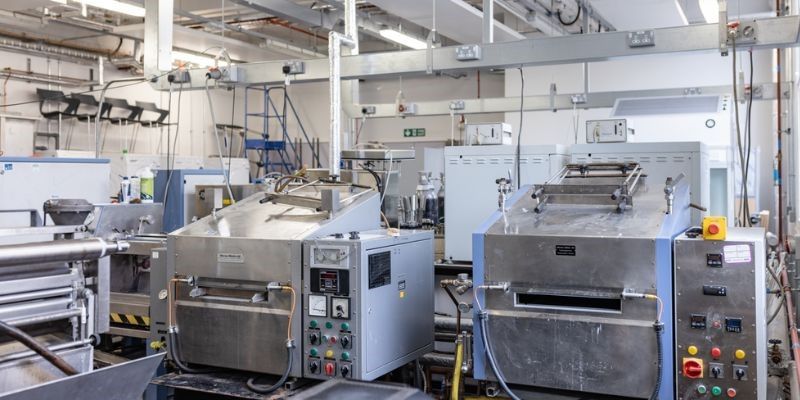
Colour facilities
Psychophysics lab
This is one of three labs that encompasses the whole spectrum of Colour Science, psychology and application, supported by a partnership with VeriVide.
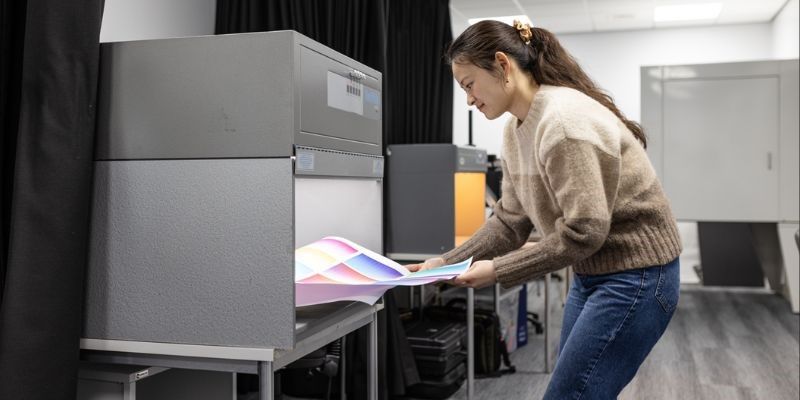
Lighting lab
Modern LED (light-emitting diode) lighting allows us to control the spectral profile of the light emission and its intensity, which in turn gives us the opportunity to optimise the lit environment. Eye-tracking facilities are also available to assist with characterising consumer response and behaviour.
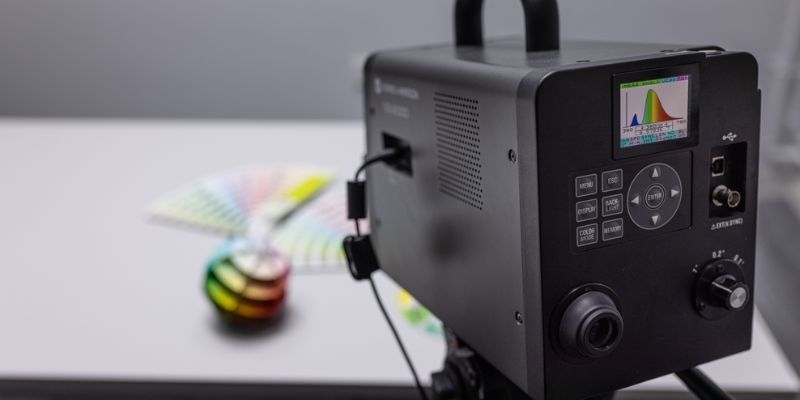
Fashion design facilities
Fashion studio
The fashion studios harness modern garment manufacturing techniques, including 3D CAD (computer-aided design)/CAM (computer-aided manufacturing), pattern cutting, marker making, layplans, grading and garment assembly techniques. Our fashion facilities are also enhanced by the Future Fashion Factory and internationally unique archives which support the creative process:
